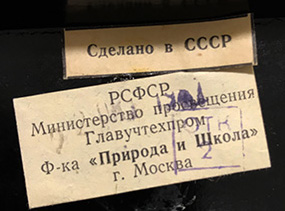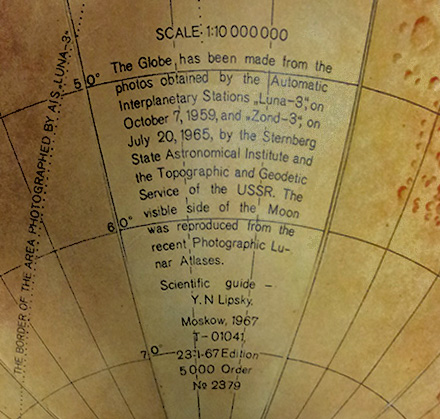The movie First Man is out in theaters, and we all know quite a bit already about the first man on the moon. But what do you know about the first photographs of the far side of the moon?
Many unusual and interesting objects find safe haven in the University Archives. One of our favorites is a 1967 Soviet globe of the moon, which likely came to the Archives from the Georgetown University Astronomical Observatory.

Professor Yuri Naumovich Lipsky (1909–1978) led the study of the first photographs of the far side of the moon, from the Luna-3 spacecraft flyby in 1959 and the Zond-3 flyby in 1965. The first full globes of the moon’s surface, as well as selenographic maps, were produced under his direction.

Scientists were of course mapping the near side of the moon long before Professor Lipsky and his extraordinary spaceborne cameras reached around it. The map below comes from Giovanni Battista Riccioli’s Almagestum novum (The New Almagest), 1651 (call #80B30 in the Library’s rare book collections). Riccioli (1598-1671), a Jesuit astronomer, introduced a new system of lunar nomenclature that is still in use today.

Many of the names preliminarily assigned to craters and landscapes by the Soviets on our lunar globe would later change to internationally agreed designations. Georgetown’s Fr. Paul A. McNally, S.J., who became director of the Georgetown Observatory in 1928, had a crater named after him in 1970 after this globe was produced. The blue dot on this photo shows approximately where that crater is on the globe. As to the place names surrounding it, Kovalevskaya is the only name in this photo that remains accurate, as the International Astronomical Union (IAU) chose to use the other names displayed for different craters.
The IAU, at its 17th General Assembly in 1979, voted to name a crater in the very center of the far side of the moon in Professor Lipsky’s honor, at coordinates 1.97 degrees S, 179.56 degrees W. Our lunar globe and Riccioli’s The New Almagest are available for study in our reading room.
Stephanie Hughes, Communications and Projects Coordinator, Booth Family Center for Special Collections and Steve Fernie, Library Website Coordinator
November 1, 2018
